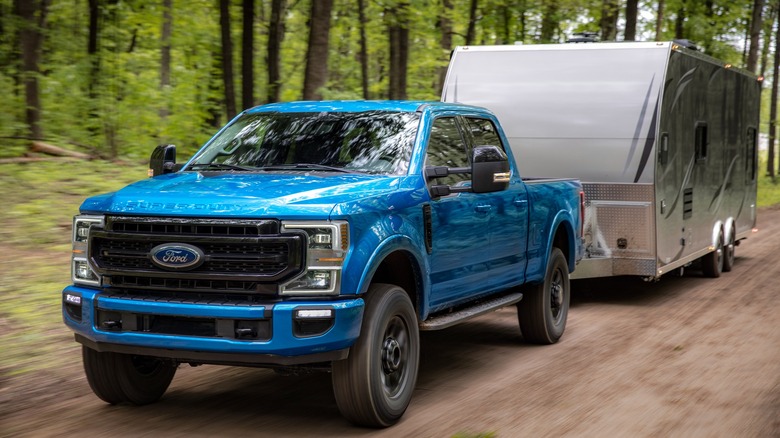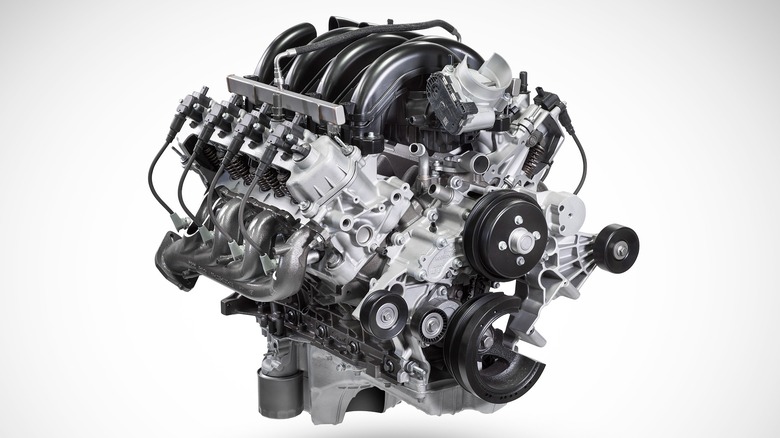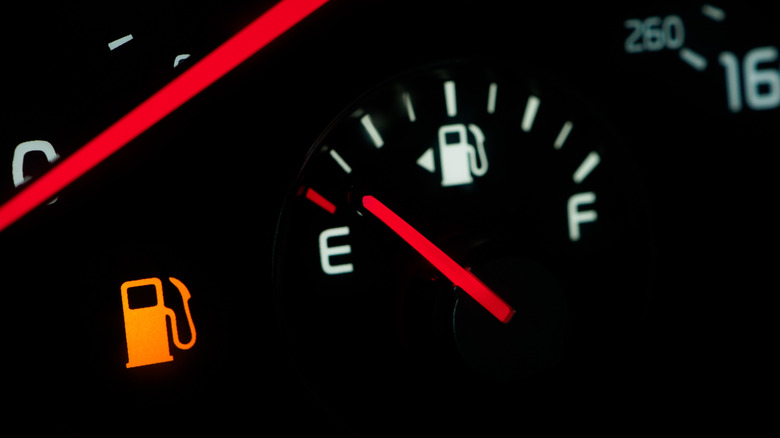How Many Miles Per Gallon Does A Ford 7.3 Godzilla Get? (And How To Improve It)
In 2020, Ford launched its largest gasoline V8 engine ever for its truck lineup, the 7.30-liter, dubbed Godzilla. This large displacement powerplant is available in a variety of Super Duty trucks, as well as medium-duty and E-Series, to name a few. Offering drivers 430 horsepower and 475-pound feet of torque, it surpasses the capabilities of rivals in the naturally aspirated gasoline engine genre, such as RAM's 6.4-liter HEMI V8 with 410 horsepower and 429-pound feet of torque or Chevy's 6.6-liter, generating 401 horsepower and 464-pound feet of torque. Of course, the Godzilla isn't the only example of the biggest V8 engines ever built by Ford or even the only 7.3-liter option, with other choices like the even more potent Megazilla.
Performance figures are a crucial factor when choosing a truck, but fuel economy often isn't. Sometimes, it's only when the trips to the gas station start adding up that efficiency and what can be done to improve it becomes a priority. In terms of the 7.3-liter Godzilla from Ford, there is a wide range of miles per gallon data reported by both media outlets performing tests and owners with real-world experience.
F-250 Godzilla owners reported averaging 13 miles per gallon. However, when pulling a trailer, you can expect quite a drop in fuel economy, with milage reportedly dropping below 9 MPG, depending on several variables such as weight, altitude, and stops, among other influences.
Fuel economy test: ideal scenario vs more demanding situations
There are many ways to use less gas while driving, although not all of them are feasible in a realistic day-to-day scenario. Automakers have attempted to make efficiency as easy as pressing a button with driving presets that promote fuel savings, such as ECO mode options, though some owners feel ECO mode isn't always effective with their Ford Super Duty.
A few of the ways to conserve fuel have to do with things like speed, the number of stops, and time idling. One Ford Super Duty owner dialed in the ideal circumstances for the best efficiency with the Godzilla and found that while traveling between 50 and 55 miles per hour (unbroken by stops or turns) and keeping the RPM between 1100 and 1300, he was able to achieve 16.9 miles per gallon, his truck's best figure to date.
In another interesting test, Cars.com took a Ford F-250 with a 7.3-liter Godzilla engine and tested fuel economy both with and without a 12,500-pound trailer. This Super Duty endured a trek just shy of 60 miles long each round that included both city and highway routes with significant elevation gains. Limiting as much weight as possible, the Godzilla-powered Ford that wasn't pulling anything managed just under 15 miles per gallon. Unsurprisingly, with a hefty trailer behind it, that same truck plummeted to 8.4 miles per gallon.
How can you enhance fuel economy with the Godzilla?
According to some Godzilla owners, one of the keys to more miles per gallon is fuel type. Greater than 98% of US gasoline contains around 10% ethanol, which is used in part for environmental reasons, as blending it with gasoline produces less harmful emissions. However, the less common but still available ethanol-free gas offers an increase of a few miles per gallon, according to some Ford Super Duty drivers.
Another important consideration when aiming for increased mileage is weight. A truck hauling heavy items or materials will require more power to get rolling and, therefore, use more fuel, meaning that those traveling with unnecessary weight in their truck are having a direct negative impact on their wallet. Studies have concluded that 100 pounds of extra load can lower miles per gallon by as much as 2 percent.
If you're not currently using that toolbox in the bed, for example, you may want to uninstall it, as some steel options can tip the scales at almost 130 pounds. Also, if you have a truck bull bar that's particularly brawny bolted up front, you could be adding up to 250 extra pounds, keeping fuel economy from improving.


